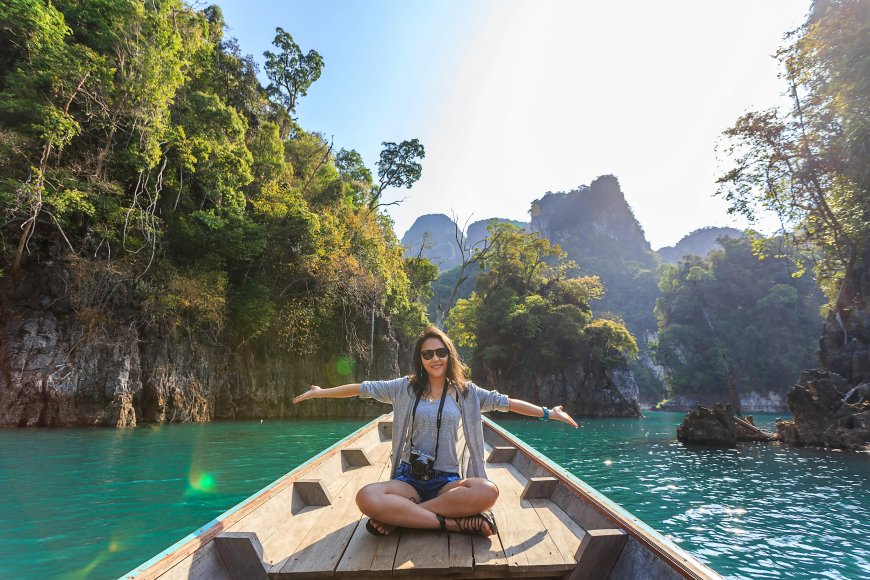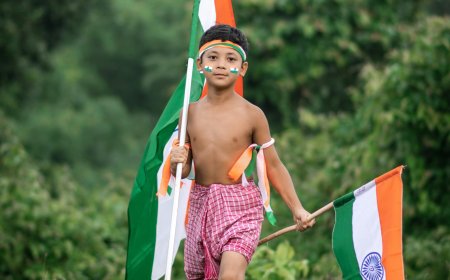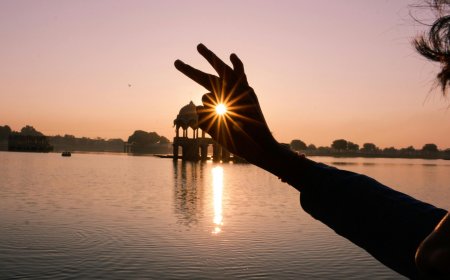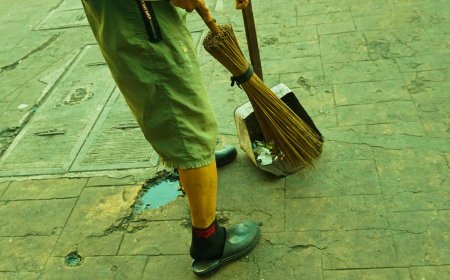The Rise of Coolcations: Why Travelers Are Choosing Colder Escapes
Heatwaves and crowds push tourists to seek coolcations. Discover why colder, quieter destinations are becoming the next big travel trend.

For decades, summer holidays meant one thing: sun-drenched beaches, suntan lotion, and scorching afternoons spent chasing shade. But in 2025, the perfect vacation looks very different. Increasingly, travelers are turning their backs on traditional summer hotspots and flocking instead to coolcations—trips to colder destinations that promise tranquility, comfort, and a break from the chaos of overtourism.
The trend is surging across Tier-1 countries like the U.S., U.K., Canada, and Australia, where travelers are choosing northern fjords over southern coasts, misty mountain towns over overcrowded islands, and crisp autumn air over stifling humidity. It’s not just a fad—it’s a response to the realities of climate change, shifting travel priorities, and the hunger for more meaningful journeys.
What Defines a Coolcation?
Unlike the conventional idea of a “holiday,” coolcations focus on destinations with mild or colder weather. Instead of squeezing into packed beach resorts, travelers are hiking through alpine valleys, exploring coastal fishing villages, or strolling historic cities during the off-season.
Coolcations offer:
- Milder weather – Escape the soaring heat of southern Europe, Florida, or Southeast Asia.
- Less stress – Smaller crowds make sightseeing more enjoyable.
- Better value – Flights and hotels can be significantly cheaper outside high season.
- New experiences – From northern lights to glacier walks, cooler regions open up unique activities.
In short, coolcations are about comfort, discovery, and slowing down.
Climate Change Is Reshaping Holidays
Global heatwaves have accelerated the trend. In recent summers, southern Europe recorded dangerous highs topping 40°C, while parts of the U.S. Southwest were gripped by extreme droughts and wildfires. For many families, particularly those with children or older relatives, enduring such conditions on vacation is simply not practical.
Cooler alternatives now feel both safer and more enjoyable. Northern Europe, Canada, New Zealand, and parts of Japan are being rediscovered as destinations where summers are pleasant and outdoor adventures can be enjoyed without overheating.
Travel experts argue that this shift isn’t temporary. As temperatures rise further in the next decade, the “summer in the sun” holiday may become a luxury fewer tourists are willing to endure.

Coolcation Hotspots in Europe
Europe has been at the heart of the coolcation boom, with travelers seeking out northern gems that were once considered secondary holiday choices.
Scandinavia’s Allure
- Norway’s fjords are drawing cruise travelers and hikers alike.
- Sweden’s Lapland offers midnight sun adventures and reindeer treks.
- Iceland continues to rise in popularity thanks to its surreal landscapes and cooler climate.
The British Isles
- Scottish Highlands – Rugged mountains, lochs, and whisky trails.
- Ireland’s Wild Atlantic Way – Dramatic coastlines and charming fishing villages.
- Northern England & Wales – National parks offer hiking, heritage, and cooler weather.
These destinations aren’t just about escaping heat—they’re about immersing in landscapes that feel wild, authentic, and untouched by mass tourism.
North America’s Coolcations
In Canada and the U.S., cooler destinations are no longer the second choice—they’re the main draw.
- Canadian Rockies (Alberta & British Columbia) – Glacial lakes and alpine hikes.
- Nova Scotia & Newfoundland – Coastal escapes with whale watching and maritime culture.
- Alaska – Glaciers, wildlife, and a wilderness experience unmatched elsewhere in North America.
- Maine & Vermont – Small-town charm and cooler summer temperatures.
For many Americans, the appeal lies in staying closer to home while still feeling a world away from the blazing southern states.
Emotional Storytelling: A Traveler’s Turning Point
Sarah Thompson, a teacher from Manchester, recalls her last trip to Rome in the height of summer. The thermometer read 42°C, water fountains had queues, and she fainted outside the Colosseum. “I realized that kind of holiday wasn’t sustainable for me anymore,” she said.
The following year, she booked a September coolcation to Iceland. Instead of battling heatstroke, she walked across black-sand beaches, watched puffins dive into the sea, and soaked in geothermal pools under cloudy skies.
“It wasn’t just a holiday,” she explained. “It felt like recovery—for my body and my mind.”
Sarah’s story is echoed by thousands of others: heat has become the tipping point that turned them toward cooler horizons.
The Industry Responds
Tourism boards, airlines, and hotels are pivoting quickly to meet demand. Scandinavian airlines are adding more routes from London and New York. Canadian provinces are marketing themselves as the “cool choice” for family vacations. Luxury resorts are offering wellness-themed retreats in mountain locations, emphasizing fresh air, digital detox, and stress-free itineraries.
At the same time, budget-conscious travelers are finding value in shoulder-season coolcations. A trip to Edinburgh in October can cost half as much as Barcelona in August—while offering richer cultural experiences without oppressive crowds.
The Deeper Appeal of Coolcations
Beyond the practical benefits, coolcations resonate with broader lifestyle shifts:
- Wellness and mindfulness – Cooler destinations encourage slower travel and reflection.
- Sustainability – Avoiding overcrowded resorts reduces strain on fragile ecosystems.
- Cultural connection – Off-peak travel fosters more genuine exchanges with locals.
- Social status – Among younger travelers, there’s a sense that escaping to a fjord or glacier is more original than another Instagram beach shot.
The coolcation, in other words, is not just about weather—it’s about values.
Challenges and Considerations
Of course, coolcations aren’t without drawbacks.
- Limited infrastructure – Some rural areas can’t handle sudden influxes of tourists.
- Unpredictable weather – Rain, fog, or cold snaps can derail plans.
- Seasonal closures – Certain attractions or services may not operate outside peak months.
Yet many travelers are willing to accept these trade-offs for the chance to escape sweltering heat and crushing crowds.
Conclusion: The Cool Future of Travel
The boom in coolcations marks a turning point in global tourism. No longer just a quirky alternative, cooler escapes are becoming a defining trend—driven by climate, culture, and the desire for calmer, more meaningful travel.
Whether it’s hiking through the Canadian Rockies, wandering Edinburgh’s cobbled streets in autumn, or watching the Northern Lights from a cabin in Lapland, coolcations reflect a deeper truth: vacations are no longer about chasing the sun, but about finding balance, comfort, and authenticity.
The future of travel, it seems, will be cooler, quieter, and infinitely more refreshing.
FAQs
1. Why are coolcations trending now?
Heatwaves, overtourism, and changing traveler priorities have pushed tourists toward cooler destinations.
2. Which countries are most popular for coolcations?
Norway, Iceland, Scotland, Canada, and Alaska are among the top choices.
3. Are coolcations cheaper than summer holidays?
Often yes, since off-peak travel offers better deals on flights and accommodation.
4. Do coolcations appeal to families?
Absolutely—milder weather is safer for children and older travelers, with plenty of outdoor activities.
5. Will coolcations replace beach holidays?
Not entirely, but they’re becoming a major alternative for those seeking comfort and authenticity.
What's Your Reaction?
 Like
1
Like
1
 Dislike
0
Dislike
0
 Love
0
Love
0
 Funny
0
Funny
0
 Angry
0
Angry
0
 Sad
0
Sad
0
 Wow
0
Wow
0



































































